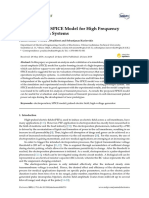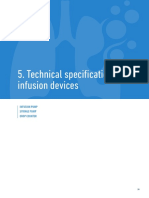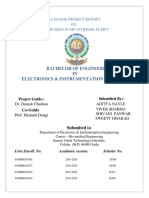1.
High-Voltage Pulse Generator:
Voltage Range: Potentially hundreds of volts for electroporation.
Pulse Characteristics: Control over pulse duration (microsecond to millisecond range), shape
(square wave, exponential decay, etc.), and potentially the number of pulses for different effects.
Circuit Design: Consider circuits like capacitor-discharge systems or specialized DC-DC voltage
converters to step up a battery's supply.
2. Electrodes:
Material: Biocompatible materials like platinum, stainless steel, or gold.
Configuration: Multiple possibilities:
Needle-like electrodes for penetration.
* Plate electrodes for surface contact.
* Microfabricated electrode arrays for specialized treatment.
Integration: Electrodes need to be securely attached to your device housing and the wiring.
3. User Interface:
Controls: At a minimum, power on/off and electroporation trigger. Consider potentiometers or dials
to adjust voltage and pulse duration.
Indicators: Visual feedback about device status (ready, active, fault).
4. Housing:
Handheld Size: Ergonomic for one-hand operation.
Sterilizable: Easy to clean and sterilize for repeated use.
5. Software (Optional):
Calibration Data: Store specific data on effective voltage and pulse parameters for different cell
types. This lets users quickly choose established settings.
� Advanced UI: A small screen and input controls can give more precise parameter selection if
needed.
Fabrication Process
1.Circuit Design and Simulation: Use electronic design software to test and simulate your high-
voltage pulse generator before actually building the circuit.
2. Prototype and Test Circuits: Begin on breadboards, then refine into custom PCBs. Thoroughly test
with dummy loads before working with live cells.
3. Design and 3D Print Housing: Use biocompatible plastics for 3D printing prototypes, potentially
moving to more robust materials later.
4. Electrode Design: Consider buying premade electrodes or explore microfabrication methods for
specialized electrode designs.
5. Assembly and Integration: Carefully assemble circuits, electrodes and housing. Wire connections
should be secure and well-insulated.
Testing and Refinement
Electrical Parameters: Use an oscilloscope to verify your device is producing pulses as per its design.
Cell Cultures: Start with simple, robust cell lines to establish initial electroporation efficacy. Test
across a range of parameters.
Iterate: Adjust pulse settings, electrode design, and device handling based on your cell break down
results. Safety validation will require multiple iterative rounds.

































































































